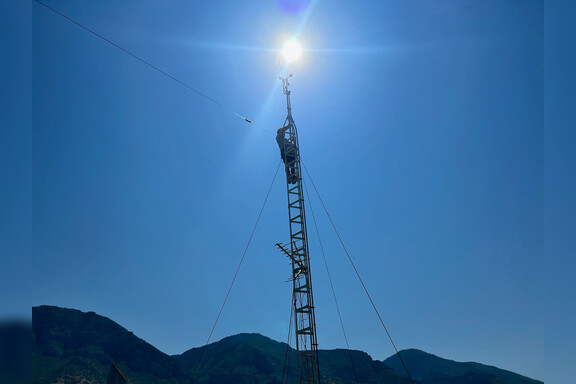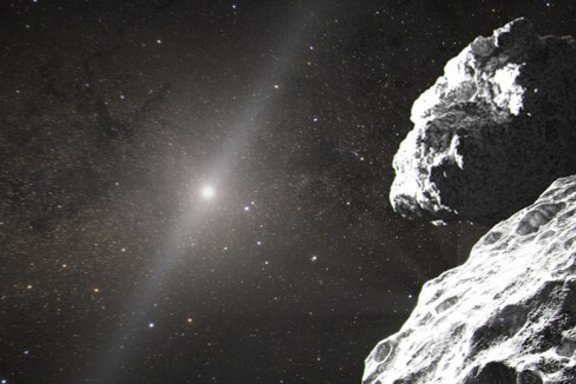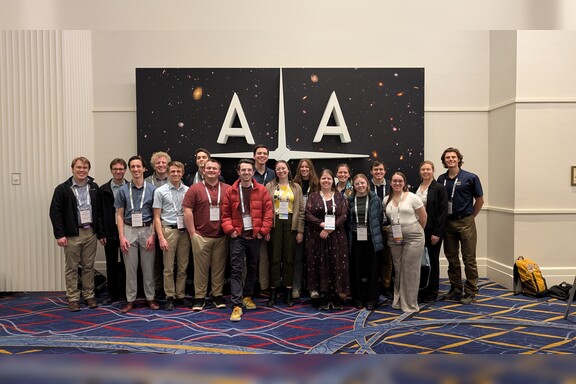News and Events


| Temp: | 33 °F | N2 Boiling: | 76.0 K |
| Humidity: | 85% | H2O Boiling: | 368.6 K |
| Pressure: | 86 kPa | Sunrise: | 7:46 AM |
| Wind: | 2 m/s | Sunset: | 5:04 PM |
| Precip: | 0 mm | Sunlight: | 76 W/m² |



Selected Publications

Protein function emerges from dynamic conformational changes, yet structure prediction methods provide only static snapshots. While AlphaFold3 (AF3) predicts protein structures, the potential for extracting dynamic information from its ensemble predictions has remained underexplored. Here, we demonstrate that AF3 structural ensembles contain substantial dynamic information that correlates remarkably well with molecular dynamics simulations (MD). We developed ChronoSort, a novel algorithm that organizes static structure predictions into temporally coherent trajectories by minimizing structural differences between neighboring frames. Through systematic analysis of four diverse protein targets, we show that root-mean-square fluctuations derived from AF3 ensembles can correlate strongly with those from MD (r = 0.53 to 0.84). Principal component analysis reveals that AF3 predictions capture the same collective motion patterns observed in molecular dynamics trajectories, with eigenvector similarities significantly exceeding random distributions. ChronoSort trajectories exhibit structural evolution profiles comparable to MD. These findings suggest that modern AI-based structure prediction tools encode conformational flexibility information that can be systematically extracted without expensive MD. We provide ChronoSort as open-source software to enable broad community adoption. This work offers a novel approach to extracting functional insights from structure prediction tools in minutes, with significant implications for synthetic biology, protein engineering, drug discovery, and structure–function studies.

We present ExoMiner++, an enhanced deep learning model that builds on the success of ExoMiner to improve transit signal classification in 2-minute TESS data. ExoMiner++ incorporates additional diagnostic inputs, including periodogram, flux trend, difference image, unfolded flux, and spacecraft attitude control data, all of which are crucial for effectively distinguishing transit signals from more challenging sources of false positives (FPs). To further enhance performance, we leverage multisource training by combining high-quality labeled data from the Kepler space telescope with TESS data. This approach mitigates the impact of TESS’s noisier and more ambiguous labels. ExoMiner++ achieves high accuracy across various classification and ranking metrics, significantly narrowing the search space for follow-up investigations to confirm new planets. To serve the exoplanet community, we introduce a new TESS catalog containing ExoMiner++ classifications and confidence scores for each transit signal. Among the 147,568 unlabeled TCEs, ExoMiner++ identifies 7330 as planet candidates (PCs), with the remainder classified as FPs. These 7330 PCs correspond to 1868 existing TESS Objects of Interest (TOIs), 69 Community TESS Objects of Interest (CTOIs), and 50 newly introduced CTOIs. 1797 out of the 2506 TOIs previously labeled as PCs in ExoFOP are classified as PCs by ExoMiner++. This reduction in plausible candidates, combined with the excellent ranking quality of ExoMiner++, allows the follow-up efforts to be focused on the most likely candidates, increasing the overall planet yield.

With the rapid growth and development of potential commercial fusion power plants, the urgency of building a skilled workforce is increasing. Therefore, it is necessary to train and educate early-career scientists and engineers to be able to work for current and future employment in fusion-related fields. In the Inertial Fusion Science and Technology (RISE) Hub, efforts are underway to address this urgency. Specifically in the RISE Hub, we train the next generation of “fusioneers” by involving them in every level of Hub activities. Here, we describe several training, outreach, and educational activities that are led by early-career scientists and engineers, graduate students, and postdoctoral researchers, under the supervision of Hub professionals. These activities educate and train students on key aspects of fusion systems, from the laser driver technologies to the target design, manufacturing, simulation, and validation. In addition, several of these initiatives are being supported by industry partners, national laboratories, and universities, facilitating the transition of knowledge between fusion experts and students. The goals of these outreach efforts led by the RISE Hub are not only to train and educate a skilled workforce but to grow young leaders and broaden their participation in developing commercial fusion power plants.

During the past few years, orbital rocket launches at Vandenberg Space Force Base (VSFB) have increased nearly ten-fold from twenty years ago. As such, there are renewed concerns about the effects of launch noise on threatened and endangered species with critical habitats within VSFB. This talk provides an overview of an interdisciplinary research program to measure and model launch and landing noise on Base and to study responses of two coastal birds, the western snowy plover and the California least tern. Short- and long-term effects are being studied, from changes in vocalization to nest success. This presentation discusses launch noise environments and findings to date.

SpaceX's Starship Super Heavy is the most powerful launch vehicle ever flown, intended to return humans to the moon and reach Mars. After measurements of three test flights (Flights 5, 6, and 9), this paper summarizes the measurements and briefly discusses launch noise and booster flyback boom characteristics. With a planned launch cadence to rival that of the Falcon 9, Starship's noise characterization is critical to determining its impacts and its place relative to other launch vehicles and noise sources. This paper accompanies an Acoustics 2025 plenary talk.

We describe a novel variation of the mirror twin Higgs model in which the color gauge group in both sectors is extended to SU(4)c and spontaneously broken to SU(3)c exclusively in the visible sector. Through this process, the mirror Z2 symmetry is spontaneously broken, allowing for a phenomenologically viable electroweak vacuum alignment. This structure produces interesting collider signatures, including heavy vectors and fermions with fractional electric charges. The twin sector, with unbroken SU(4)c, produces interesting cosmological characteristics, such as the possibility to reduce ∆Neff and stable spin-0 baryons. The enlarged top quark sector required by the extended color gauge symmetry preserves naturalness, with even less tuning than the original twin Higgs in many circumstances.
